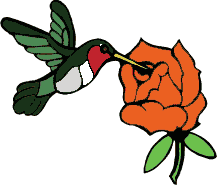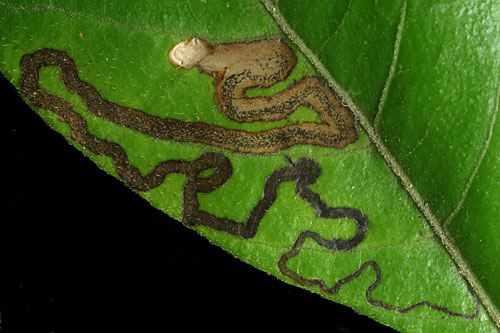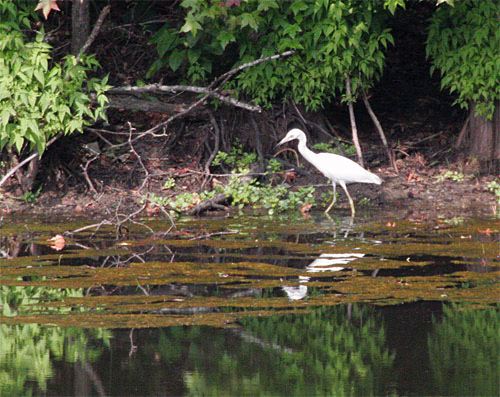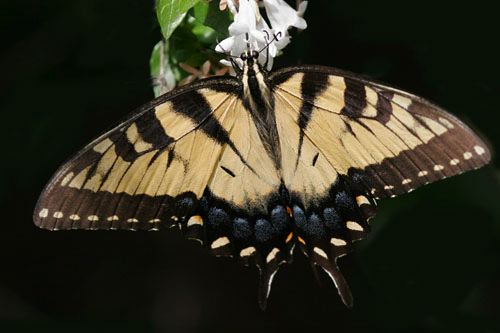|
|
|||
THIS WEEK at HILTON POND
22-31 July 2006
Installment #323---Visitor #
(Back to Preceding Week; on to Next Week)
|
|
|
MID-SUMMER POTPOURRI
As the "dog days" of August approach, activity at Hilton Pond Center seems to slow down a bit--almost as an acknowledgement that things are getting progressively hotter. All the spring and early summer wildflowers have finished blooming; in fact, many have set seed, wilted, and disappeared with the onset of seasonal heat. Late summer blooms such as Goldenrod haven't yet appeared, so about the only blossoms around are Winged Sumac and Daisy Fleabane. With a little work, however, we can still find natural wonders around Hilton Pond, beginning at our very backdoor--where a robotic-looking Leaf-footed Bug is the first ingredient in our Mid-Summer Potpourri. But scroll down cautiously; the view of the bug we present herein probably isn't what you might expect, and it's an image that might scare small children!
All text & photos © Hilton Pond Center There are many types of Leaf-footed Bugs, and all are TRUE bugs--Hemipterans--with long stylus-like mouthparts used to penetrate plant tissue or, in some cases, the exoskeletons of other insects. The particular bug in question was dead on our doorstep one day this week, cause of death unknown. That it was inanimate did provide us with an opportunity to examine it very closely without fear of being stabbed by its proboscis, so we rolled it over on its back and brought out our extreme macro lens for a close-up of mouthparts that reached from the tip of its head all the way to between its second pair of walking legs. Just off the back deck of our old farmhouse we found another less-intimidating bug--a live one posed motionlessly on the leaf of a Fringe Tree. This much-smaller creature--slightly less than a half-inch in length--was an immature form of a Green Stink Bug (above right). On its back appeared to be some sort of animal face, but it was actually segments of its abdomen and the portion of an exoskeleton that would soon burst open to reveal two pairs of wings. The top pair would be membranous for only their latter half, with the front portion being leathery--hence the name "hemipteran," or "half-wing." Our little green bug was in its final instar, the last growth stage before it would emerge as fully winged adult.
Our next midsummer encounter was a small reptile relatively common around Hilton Pond--a so-called "blue-tailed skink," perched in semi-shade on a large quartz rock (above). To be more correct, it was actually a Five-Lined Skink, Eumeces faciatus, whose juvenile forms have brilliant-blue tails. Our guess is this startling hue is a decoy for songbirds, all of which have very sharp color vision. When a bird goes after the fleet-footed lizard, the potential predator might easily be distracted by the flashy tail color and end up with a bill-full of squirming rear appendage rather than the entire reptile. In older specimens the blue disappears and stripes become a little less yellow; perhaps lizards that live that long don't need the added advantage of an azure tail and can get by with more traditional camouflage. (NOTE: It's interesting that the skink in the photo has a noticeable scar on its left side--perhaps a souvenir from a near-miss by a not-so-competent predator.)
Later on, while we were examining the flowers on one of those Winged Sumac shrubs mentioned earlier, we noticed a leaflet with an unusual pattern. We recognized it as the trail of some sort of leaf-miner, one of many kinds of tiny insects--usually flies--that lay even tinier eggs in the mesophyll layer between the upper and lower epidermis of a leaf. In our photomicrograph of the leaf's top surface you can see a miniscule wound at lower right where the female insect penetrated the upper epidermis with her ovipositor and left behind an egg. The egg hatched, producing a very small grub that slowly but surely began munching its way through the highly nutritious interior cells of the leaf. The larva meandered along, its tunnel turning one way and then the other and getting progressively wider as it went--making what looks a lot like an ever-widening river complete with an oxbows and delta. Eventually, the maggot formed a pupa at the end of the tunnel and metamorphosed into an adult fly that made its way out--making a relatively large wound, since healed. Fortunately for the Winged Sumac, only one of its hundreds of leaves was infested by the leaf miner, and fortunately for the leaflet itself the larva didn't eat away all of the leaflet's internal cells.
As we finished photographing the trail of the leaf miner we sensed something flying overhead and looked up to see a large white bird sailing toward the far end of Hilton Pond (above). As it settled down it became obvious it was a wading bird, but not until we replaced our macro attachment with a 100-400mm zoom lens and peered through could we say for sure an immature Little Blue Heron had just landed. We fired off a couple of quick exposures and walked slowly toward the pond's near bank, but even that small amount of movement spooked the bird, which flapped to get airborne and disappeared over the trees toward a larger pond to the west.
As depicted in John James Audubon's elephant folio portrait (above), the adult Little Blue Heron has gray-blue body and wings with reddish-brown neck and head; first-year birds are all white. In adult and juvenile plumages the Little Blue Heron can be distinguished from other similar-sized herons and egrets just by bill color: Bluish with a black tip. By comparison, Snowy Egrets have black bills, while a Cattle Egret's is yellow. We haven't seen a Little Blue Heron at Hilton Pond in several years--not surprising since in the Carolinas the species breeds only on the coast and any in the Piedmont are post-breeding wanderers. (NOTE: After we went back inside our office, we saw the heron return to Hilton Pond, where it foraged for several hours.)
Our last photographic subject of the week was an Eastern Tiger Swallowtail butterfly (above), nectaring in full sun on an old non-native Chinese Abelia shrub growing along the road in front of Hilton Pond Center. Based on the preponderance of metallic blue on the butterfly's hind wing, we'd say the specimen was a female; males have much more black in that region. The species is unusual in that females occur in two color morphs, one like that in the photo above and the other all black. It may be hot as blazes the last week in July around Hilton Pond, but that certainly didn't mean nature was taking a siesta. As shown above, we had no difficulty finding a slew of things to photograph; there were PLENTY of ingredients for our Summer Potpourri. Our only problem was humidity so high that each time we took our camera outside from the air conditioned office we had to wait several minutes for lenses to unfog, and by then WE had started to sweat. Such is the life of the naturalist during summer in the Carolina Piedmont.
All text & photos © Hilton Pond Center Hummingbird Mornings
Once again this year we'll be taking our Hummingbird Mornings programming to the Woodlands Nature Station HummerFest at Land Between the Lakes in western Kentucky. If you're within driving distance we invite you to come out for a public lecture Friday night (4 August 2006) and two days of hummer banding activities (Saturday & Sunday)--with exciting opportunities for you to get up close and personal with a hummingbird. (Did we mention the Nature Station is a traditional stop for early migrant Ruby-throated Hummingbirds? If you've never seen 200 ruby-throats simultaneously buzzing around feeders, here's your big chance!) Details and directions are at Hummingbird Mornings, or call the LBL office at (270) 924-2020. Comments or questions about this week's installment?
Thanks to the following fine folks for recent gifts in support of Hilton Pond Center for Piedmont Natural History and/or Operation RubyThroat: The Hummingbird Project. Your contributions allow us to continue writing, photographing, and sharing "This Week at Hilton Pond." (See Support if you'd like to make a gift of your own.)
"This Week at Hilton Pond" is written & photographed You may wish to consult our Index of all nature topics covered since February 2000. You can also use our on-line Hilton Pond Search Engine at the bottom of this page. For a free, non-fattening, on-line subscription to |

 "HUMMINGBIRD MORNINGS"
"HUMMINGBIRD MORNINGS"
 The mouthparts measured three-eights of an inch in length--pretty impressive for an insect whose total length was only an inch and an eighth. It was just the sort of image that might show up in a horror movie at midnight.
The mouthparts measured three-eights of an inch in length--pretty impressive for an insect whose total length was only an inch and an eighth. It was just the sort of image that might show up in a horror movie at midnight.






 Please report your
Please report your
